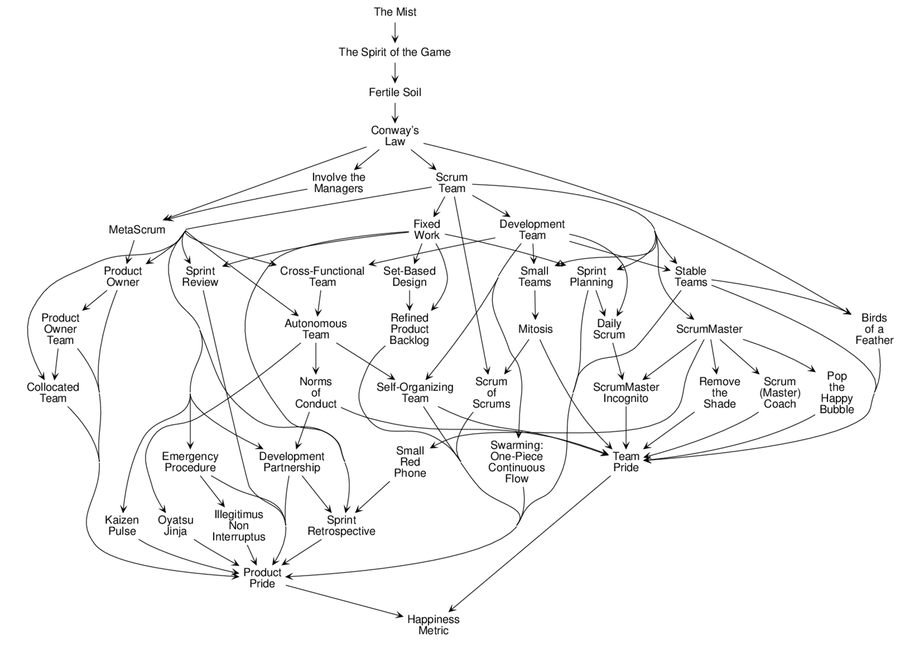

This chapter describes a set of patterns you can use to build your ¶7 Scrum Team and the other associations of people and loci of relationships that are common to Scrum practice. The Product Organization is one major Whole to which you must attend when introducing Scrum; the other one is the Value Stream Pattern Language. You build your organization and your process in parallel, each a little at a time, weaving together patterns from both chapters.
The preceding figure shows the relationships between the patterns in this chapter. We apply patterns one at a time. The figure is a guide for the order in which we should apply them. This structure is called a pattern language, because just as a language like English describes how we can sequence words in meaningful ways, this graph describes meaningful pattern sequences. More precisely, it is called a generative pattern language because it generates “sentences” that are combinations of patterns that powerfully reinforce each other.
Each node of the graph is a pattern, and the lines between patterns depict ordering dependencies between them. The graph therefore shows, for each pattern, the patterns above it, which you should already have considered before applying any given pattern—and the ones below it, which are candidates for next steps once you have put the current one in place. Of course, instead of just forging ahead, you can jump to another place in the graph and add a pattern that refines some other pattern you had applied earlier. One pattern is said to refine another (or to refine several other patterns), or the other way around, one pattern is said to contain one or more other patterns. So The Spirit of the Game refines ¶2 The Mist, and ¶4 Conway’s Law contains Scrum Team.
There are, of course, almost countless ways to sequence the patterns, each sequence giving rise to a Scrum organization with a slightly different character. Though you should challenge yourself by considering most of the patterns in this book over time, you don’t have to use all of them. You will usually pick the patterns that catch your eye and then organize them into a sequence using the graph as a guide. But the dependencies aren’t strict and we encourage you to engage your insight and intuition as you apply the patterns. Of course, it is O.K. to change your mind along the way.
In the next section, we present a kind of canonical or default sequence for the major patterns in the Product Organization Pattern Language. But, again, use your insight and intuition rather than following the sequence as a mandate. You know more about your organization and your situation than we do.